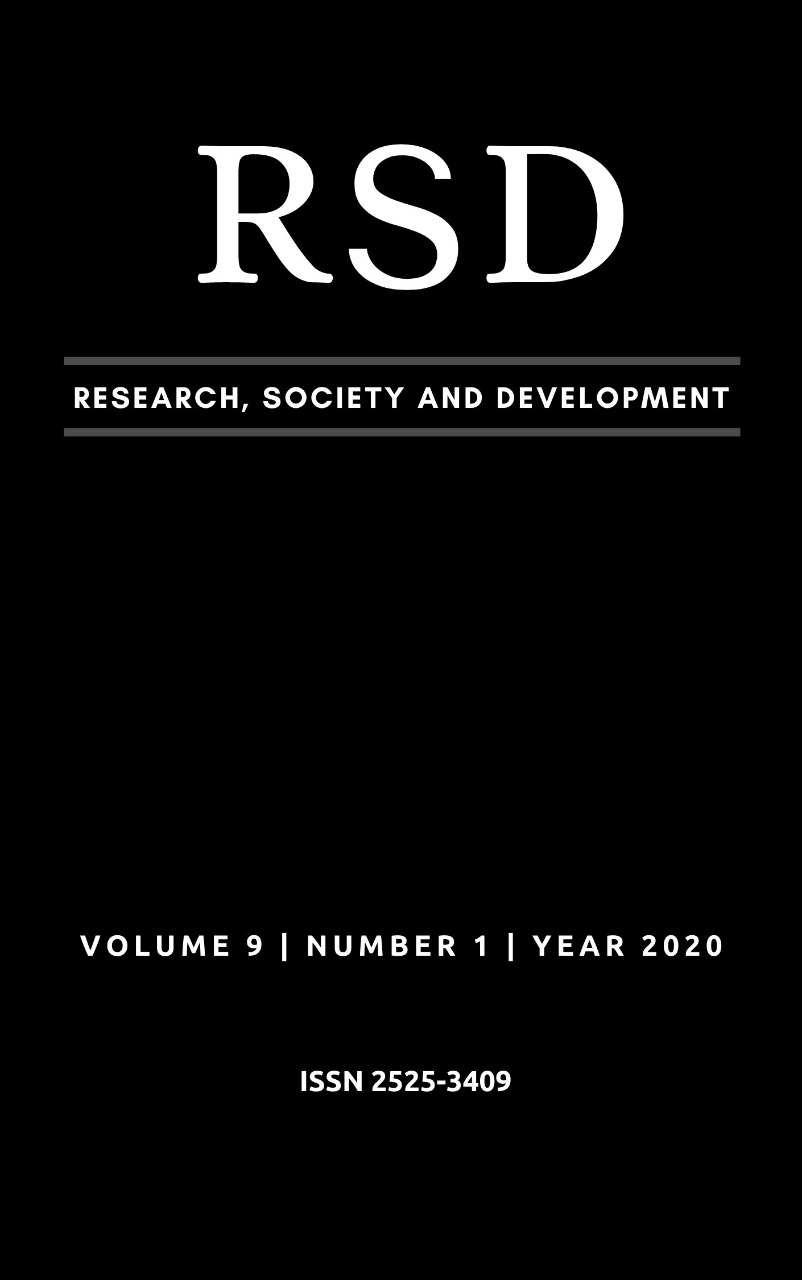Sistema construtivo De Madeira Laminada Colada (MLC): técnicas e desempenho termoenergético
DOI:
https://doi.org/10.33448/rsd-v9i1.1919Palavras-chave:
Madeira Laminada Colada. Eficiência energética. BIM. Arquitetura bioclimática.Resumo
O objetivo do ensaio, através de uma pesquisa explicativa com caráter qualitativo-quantitativo, é a realização de testes com o programa computacional Autodesk Revit ®, baseado na tecnologia BIM, com a utilização da ferramenta Insight360 e Green Building Studio da Autodesk ®, para, através de um modelo real, com as propriedades térmicas dos materiais, gerar a simulação termoenergérica de uma edificação que usa a Madeira Laminada Colada (MLC) de Pinus elliottii como elemento estrutural de vigas e da cobertura, visto o material como um produto de alto potencial para elementos construtivos além da sustentabilidade ao aplicá-lo. As análises de eficiência energética e comportamento do material foram realizadas, de modo que se constatou que os resultados obtidos em conjunto com os materiais utilizados em construção, em especial a MLC, são adequados para os parâmetros de conforto estabelecidos pelas normativas e tornando-a aliada aos preceitos de construção e arquitetura bioclimática.
Referências
ABNT – ASSOCIAÇÃO BRASILEIRA DE NORMAS TÉCNICAS. (2005a). NBR 15220-2: Desempenho térmico de edificações – Parte 2: Métodos de cálculo da transmitância térmica, da capacidade térmica, do atraso térmico e do fator solar de elementos e componentes de edificações. Rio de Janeiro.
ABNT – ASSOCIAÇÃO BRASILEIRA DE NORMAS TÉCNICAS. (2005b). NBR 15220-3: Desempenho térmico de edificações – Parte 3: Zoneamento bioclimático brasileiro e estratégias de condicionamento térmico passivo para habitações de interesse social. Rio de Janeiro.
ANVISA - AGÊNCIA NACIONAL DE VIGILÂNCIA SANITÁRIA. (2003). Resolução n. 9: Orientação técnica elaborada por grupo técnico assessor sobre padrões referenciais de qualidade do ar interior em ambientes climatizados artificialmente de uso público e coletivo. Rio de janeiro, 2003
Bonduelle, G. M., Iwakiri, S., Chies, D., & Martins, D. (2006). Fatores que influenciam no rendimento em laminação de Pinus spp. Floresta e Ambiente, 12(2), 35-41.
Fedrigo, N. S., Ghisi, E., & Lamberts, R. (2009). Usos finais de energia elétrica no setor residencial brasileiro. ENCONTRO NACIONAL DE CONFORTO NO AMBIENTE CONSTRUÍDO, 10, 367-376.
Freire, M. R., & Amorim, A. L. D. (2011). A abordagem BIM como contribuição para a eficiência energética no ambiente construído. V Encontro de Tecnologia de Informação e Comunicação na Construção Civil (TIC 2011), Salvador.
Godoy, A. S. (1995). Pesquisa qualitativa: tipos fundamentais. Revista de Administração de empresas, 35(3), 20-29.
Koppen, W. & Geiger, R. (1928). Klimate der Erde. Gotha: Verlag Justus Perthes. 1928.
Lamberts, R., Guisi, E., Pereira, C., & Batista, J. (2010). Casa eficiente: simulação computacional do desempenho termo-energético. Florianópolis: UFSC/LabEEE, 4.
Lamberts, R. (1989). Desempenho Térmico de Materiais e Componentes de Edificação. In: Simpósio de Desempenho de Materiais e Componentes de Construção Civil, 2., 1989. Anais [...] Florianópolis: UFSC.
Lamberts, R., Dutra, L., & Pereira, F. O. R. (1997). Eficiência energética na arquitetura (pp. 28-50). São Paulo: PW Editores.
Martins, P. C. F. (2011). A interoperabilidade entre sistemas BIM e simulação ambiental computacional: estudo de caso.
De Magalhães, L. N., & dos Santos, P. R. D. L. (2009). A madeira laminada colada como material estrutural de uma construção sustentável. construindo, 1(01).
Nogueira, R. D. S. Proposta de um método de ensaio para o controle de qualidade na produção de elementos estruturais de MLC e LVL (Doctoral dissertation, Universidade de São Paulo).
Queiróz, G. R. D. (2016). Análise da interoperabilidade entre os programas computacionais autodesk revit e energyplus para a simulação térmica de edificações.
Pereira, A.S. et al. (2018). Metodologia da pesquisa científica. [e-book]. Santa Maria. Ed. UAB/NTE/UFSM.
Ribeiro, L. P. (2008). Conforto térmico e a prática do projeto de edificações: recomendações para Ribeirão Preto (Doctoral dissertation, Universidade de São Paulo).
Roriz, M. (2008). Conforto e desempenho térmico de edificações. São Carlos.
Spannenberg, M. G. (2006). Análise de desempenho térmico, acústico e lumínico em habilitação de interesse social: estudos de caso em Marau-RS.
Stumpf, A., Kim, H., & Jenicek, E. (2009). Early design energy analysis using bims (building information models). In Construction Research Congress 2009: Building a Sustainable Future (pp. 426-436).
Tavares, S. F. (2006). Metodologia de análise do ciclo de vida energético de edificações residenciais brasileiras.
Wahrhaftig, A., Brasil, R. & Ventura, A. (2007). Estrutura de madeira laminada colada. Téchne, [S. I.], 120:1-8.
Downloads
Publicado
Edição
Seção
Licença
Autores que publicam nesta revista concordam com os seguintes termos:
1) Autores mantém os direitos autorais e concedem à revista o direito de primeira publicação, com o trabalho simultaneamente licenciado sob a Licença Creative Commons Attribution que permite o compartilhamento do trabalho com reconhecimento da autoria e publicação inicial nesta revista.
2) Autores têm autorização para assumir contratos adicionais separadamente, para distribuição não-exclusiva da versão do trabalho publicada nesta revista (ex.: publicar em repositório institucional ou como capítulo de livro), com reconhecimento de autoria e publicação inicial nesta revista.
3) Autores têm permissão e são estimulados a publicar e distribuir seu trabalho online (ex.: em repositórios institucionais ou na sua página pessoal) a qualquer ponto antes ou durante o processo editorial, já que isso pode gerar alterações produtivas, bem como aumentar o impacto e a citação do trabalho publicado.


